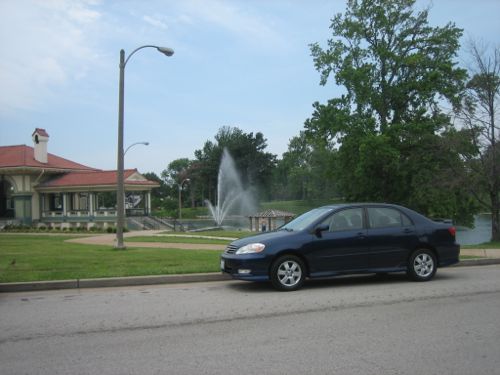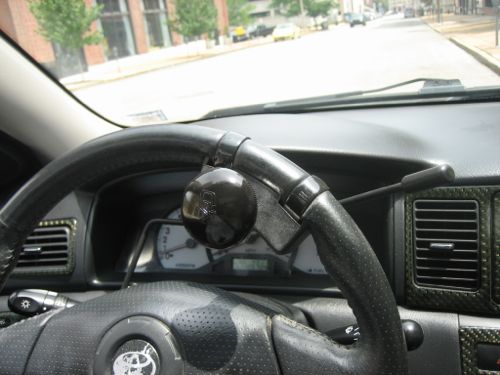The last 50 years saw our region (and most regions nationally) flee the inner city, and eventually inner ring ‘streetcar’ suburbs for the newly developing auto-centric sprawl of suburbia. The coming 50 years will be radically different. The following are my thoughts on the changes we’ll see by the close of the first half of the 21st Century.
We already know that by 2050 the U.S. is expected to grow by a third, going from 300 million to 400 million. We have no reason to believe the desires and values of the 1950s will be the same in the 2050s, the 1950s were certainly different than the 1850s.
The decision makers in 1950 were likely born around 1900. The cities of their youth were a polluted places. Many cities in the first half of the 20th century could be as dark as night due to think smoke from coal fired furnaces. Cities were literally dirty places. All the jobs & retail were in the city so one had little choice but to go to the city. That generation changed everything to get themselves away from the city center.
The American dream of the single family detached home surrounded by a lush lawn and two cars in the garage will cease to be the dream for most Americans by 2050. The further we get into the period of high energy costs the more people will realize the folly of hoping in the car to head 3 miles to a big box supermarket, or anywhere for that matter. Of course in the future that big box supermarket may not exist.
Agribusiness, I believe, will collapse as the cost to produce and ship food great distances will cripple their business plan. Food will become more local out of fiscal necessity.
As we transition from a world a cheap energy to one where energy is very costly much will change. Wal-Mart too will collapse as they struggle to offer consumers cheap goods shipped from halfway around the world. Their vast parking lots in suburbia will be increasingly empty, just like their shelves.
Alternatively I think by 2050 we’ll see the 200,000sf Wal-Mart Supercenter break up and be replaced with the Wal-Mart main street. One walkable street connected to adjacent residential and lined with a number of Wal-Mart specialty stores such as pharmacy, grocery, clothing, electronics and so on.   This won’t happen in some corn field but along an arterial currently lined with fast food shacks and cinder block & dryvit strip centers.  Municipalities will see this as the only way to create main street type retail to serve their residents. It may be Wal-Mart or it might be whatever retailers come along after they crash & burn.
Rolling blackouts to deal with demand for electricity will shape generations being born now. They will also be shaped by the high price of gas. Just as the generation from 1900 looked with envy at the wealthy who had large homes in places just outside the city like Webster Groves the generation being born now but raised in car required sprawl will be envious of those with the option to walk a few blocks to work, or to get daily goods & services. Indeed it will be the wealthy who will first place themselves in the new emerging urban enclaves.
Over the next half century manufacturing will return to the U.S. As transportation costs mount we will begin to see that the cheap item made in China or the head of lettuce grown in Southern California will be more costly than the same thing made or grown closer to home.
As a future Urban Planner this is an exciting time. The next decade or so will be rough but beyond that we’ll see the re-urbanization of the St Louis region and in regions across the country. I’m not suggesting the entire population of the region will live & work with the boundaries of the City of St Louis. What I am suggesting is that in addition to the city our inner-ring suburbs and a few after that will add population and will take on new forms to reflect the market demand for “walkable urbanism.” The single-family detached homes may remain but the commercial arterial roads, now littered with fast food joints, will get mixed-use urban form buildings.
The large vinyl-clad McMansions of suburbia may get reconfigured to house more than one single family. Lawns will become vegetable gardens. Those places farthest away from a main street and/or transit (ie: requiring a drive to get there) will be unwanted.  Children raised in these conditions will long for urbanism when they seek places on their own.
The municipality of Dardene Prairie in St Charles County is already taking the right steps to stay relevant. They are in the process of creating a walkable downtown on vacant commercial land between existing cul-de-sac subdivisions. When built out in say 20 years that will serve to connect now disconnected subdivisions. Creve Coeur is also working on a downtown plan. Much of what Urban Planners will be doing over the next few decades is retrofitting sprawl with mass transit and walkable urbanism. These places won’t have 10+ story buildings for blocks but they will have 2-5 story buildings opening directly to the street.
Future road projects will not center on how much traffic volume can be accommodated but how to make stretches of road more hospitable to pedestrians and cyclists, the opposite of today’s big projects like I-64.
In 2050 I will turn 83 years old. Thus I may only see the start of this transformation. Hopefully I will play a role in the process from suburbia to urbanism. In 2050 my great-niece will be 52 and her younger brother will be 46. Their adult lives won’t be about driving everywhere.  They may never need a car.
The problem is that today’s leadership is stuck on fulfilling the dreams of their grandparents generation, only making it bigger and more sprawling. The mounting energy crisis is going to test everyone’s idea of the ideal built environment. Those municipalities that embrace the increasing demand for urbanism will fare better than those that don’t. As a region our growth will depend upon the actions within tons of small municipalities on both sides of the river. How we are perceived by those outside our region will become important as we try to get manufacturing jobs that return stateside.
The City of St Louis divorced itself from St Louis County in 1876 and in the coming decades that may prove to benefit the city. If, in the coming decades, we rebuild much of our now-vacant areas in a dense urban model we can repopulate the city and attract great new jobs.  Not being part of a county will give the city the freedom to go its own direction while ignoring potential sprawl holdouts in the balance of the region. Of course I’m afraid the pro-sprawl holdouts may still be in charge in city government.
As we face an uncertain future regarding energy I’m nonetheless optimistic about the future and the role I may play in shaping cities over the next 40 years or so.
 For obvious reasons I bought one with an automatic transmission — no extra hand to shift with (while keeping the other on the wheel) nor a reliable leg to activate a clutch. I also wanted a vehicle with power windows because trying to use my right hand to roll down the driver’s window would not be easy. The Corolla has an outstanding reliability record and excellent fuel economy. This Corolla, like most, was assembled in the joint venture Toyota/GM plant known as
For obvious reasons I bought one with an automatic transmission — no extra hand to shift with (while keeping the other on the wheel) nor a reliable leg to activate a clutch. I also wanted a vehicle with power windows because trying to use my right hand to roll down the driver’s window would not be easy. The Corolla has an outstanding reliability record and excellent fuel economy. This Corolla, like most, was assembled in the joint venture Toyota/GM plant known as 

